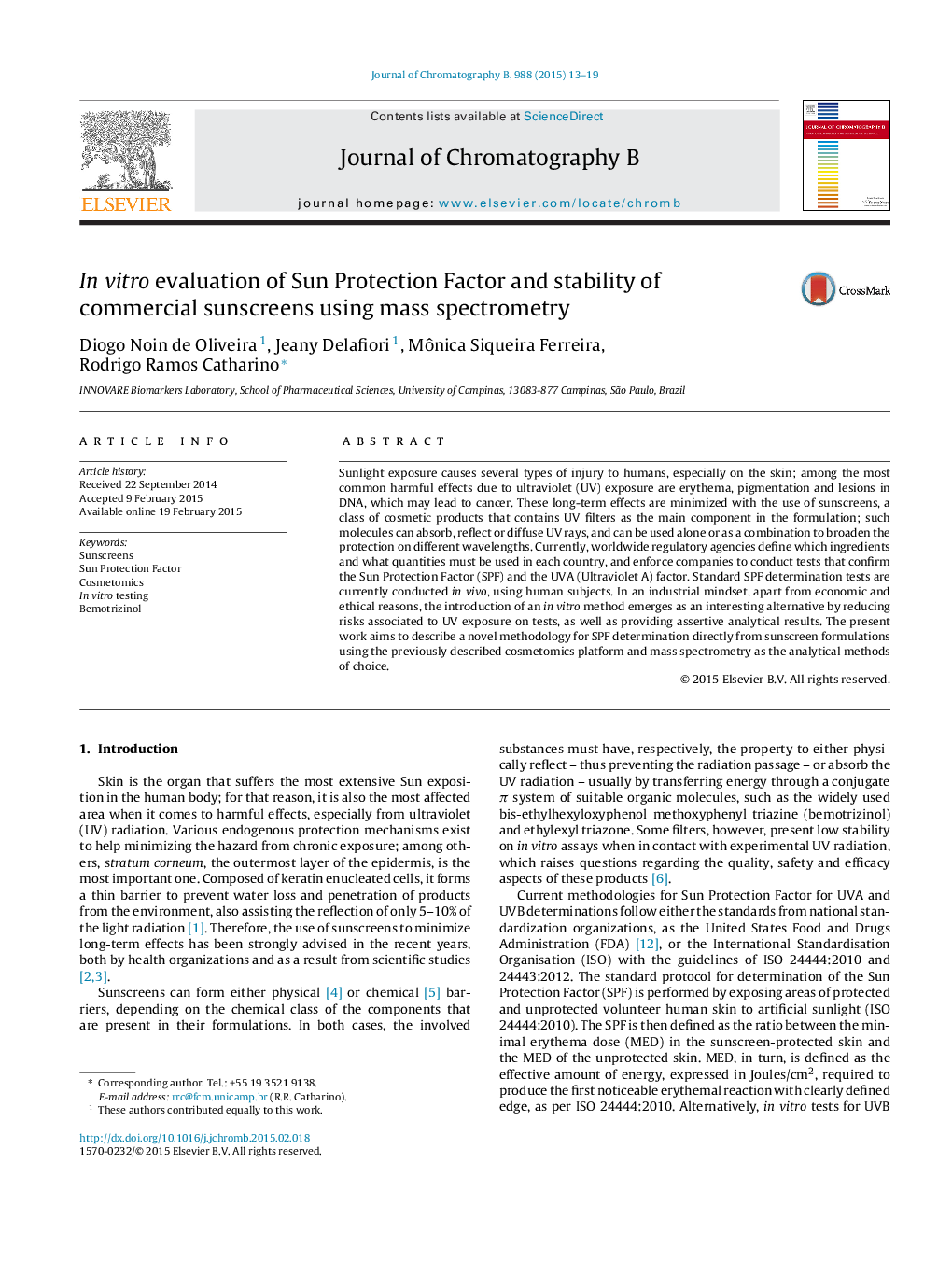| Article ID | Journal | Published Year | Pages | File Type |
|---|---|---|---|---|
| 1213041 | Journal of Chromatography B | 2015 | 7 Pages |
•The paper discusses a new mass spectrometry-based technique for sunscreen protection factor evaluation.•High specificity to compounds of interest as opposed to the minimal erythema dose approach.•In vitro testing to serve as an alternative for in vivo testing.
Sunlight exposure causes several types of injury to humans, especially on the skin; among the most common harmful effects due to ultraviolet (UV) exposure are erythema, pigmentation and lesions in DNA, which may lead to cancer. These long-term effects are minimized with the use of sunscreens, a class of cosmetic products that contains UV filters as the main component in the formulation; such molecules can absorb, reflect or diffuse UV rays, and can be used alone or as a combination to broaden the protection on different wavelengths. Currently, worldwide regulatory agencies define which ingredients and what quantities must be used in each country, and enforce companies to conduct tests that confirm the Sun Protection Factor (SPF) and the UVA (Ultraviolet A) factor. Standard SPF determination tests are currently conducted in vivo, using human subjects. In an industrial mindset, apart from economic and ethical reasons, the introduction of an in vitro method emerges as an interesting alternative by reducing risks associated to UV exposure on tests, as well as providing assertive analytical results. The present work aims to describe a novel methodology for SPF determination directly from sunscreen formulations using the previously described cosmetomics platform and mass spectrometry as the analytical methods of choice.
Graphical abstractFigure optionsDownload full-size imageDownload as PowerPoint slide
